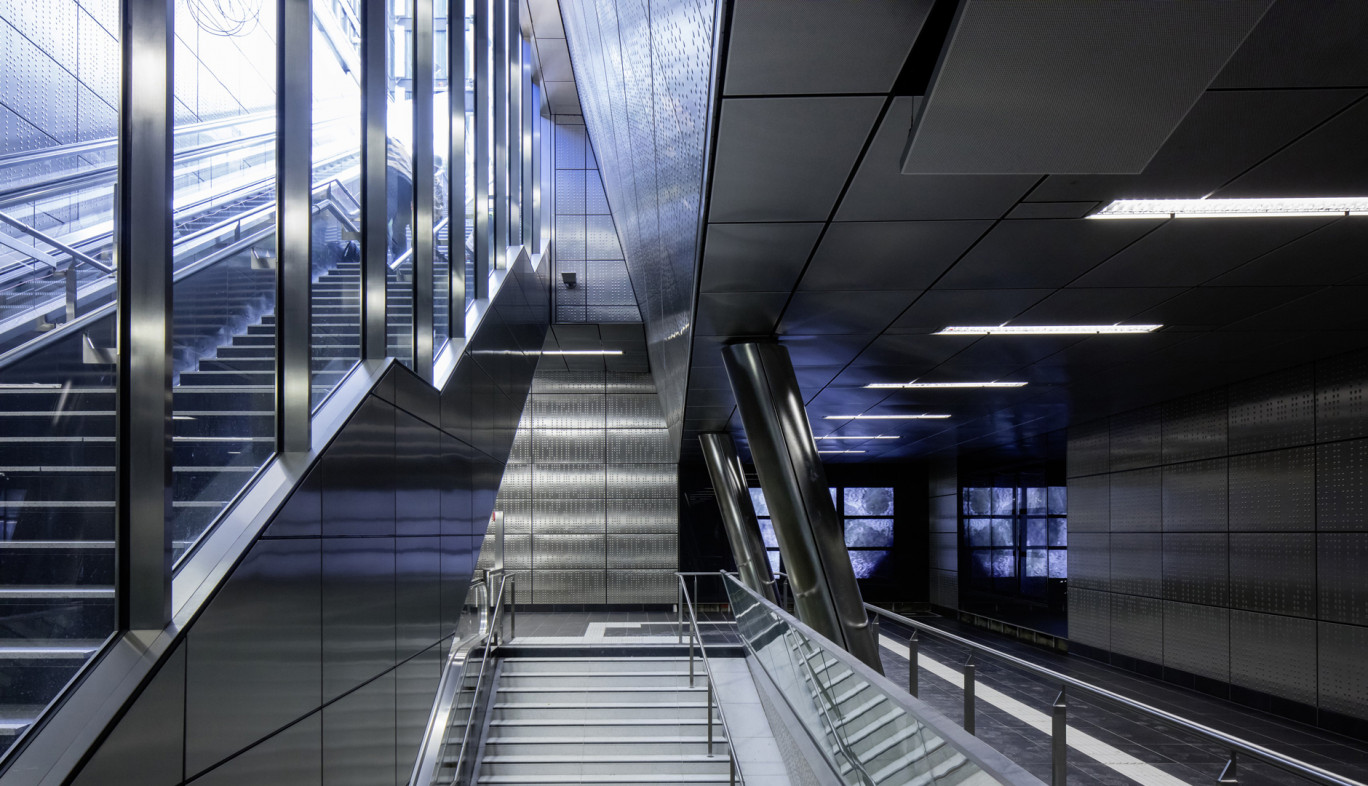Continuum and Cut
It’s an exceptional group achievement that opened in Duesseldorf in February 2016: the Wehrhahn-Line, a new subway line that travels 3.4 kilometers across Duesseldorf city center. For Duesseldorf, this is the biggest transport construction scheme since the completion of the Rhine River tunnel in 1993. The project was completed after 15 years of planning and construction, with architects, artists, engineers, and the city administration working side-by-side.
This large-scale project aims to bring about fundamental improvements to the regional capital in the years to come. In addition to faster inner-city connections along the new line, urban development areas in the east and west will now be better interlinked with the preexisting transport network. More than 50,000 travellers are expected to use the new line on a daily basis, to decongest city traffic.
The exhibition examines the project’s different phases, offering insight into the protagonists’ close collaboration, introduces the artists, and presents the designs for the subway tunnel and the individual stations through drawings, models, and plans.
The project was launched with an international competition in 2001. From 70 entries, Darmstadt-based netzwerkarchitekten and artist Heike Klussmann were selected as the winning team. In their award-winning design, architecture and art are inseparable, complementing one another as they extend as an ensemble from the surface down to the train platforms, like a snake winding its way through the soil and widening out at the stations. In the transition from surface to underground they create recognizable “cut spaces,” each very different with a unique identity.
For the design of the individual stations, further artists were selected in a separate competition: Ralf Brög for Heinrich-Heine-Allee, Ursula Damm for Schadowstrasse, Manuel Franke for Graf-Adolf-Platz, Enne Haehnle for Kirchplatz, Heike Klussmann for Pempelforter Strasse and Thomas Stricker for Benrather Strasse.
The skillful interplay of engineering prowess and art has succeeded in making the Wehrhahn-Line an exemplary and innovative contribution to the city infrastructure, one that now offers Duesseldorf’s residents and visitors an exceptional opportunity to “experience space” in local urban transit.
